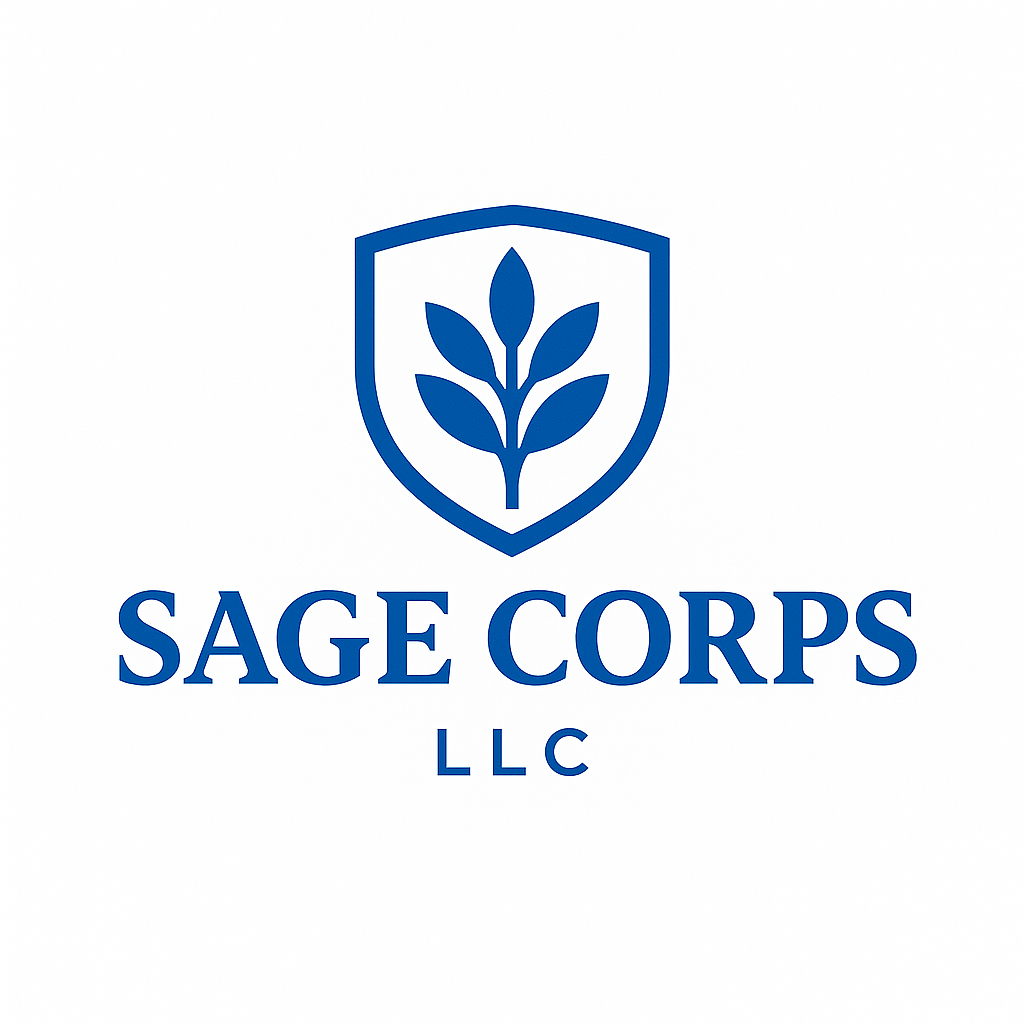Referrals Are Great — But They’re Not a Growth Strategy
You’ve probably landed some amazing clients through referrals—and that’s awesome! Word-of-mouth is flattering, powerful, and cost-effective. It means people like you and trust your work. But here’s the catch: referrals are random. You don’t control when they come in or who they are. One month you might get three warm intros. The next? Radio silence. That’s not a business model—it’s a coin toss.
If you’re building a high-ticket business, you need predictable systems. You can’t rely on “hope marketing” to fill your calendar. Referrals feel great when they happen, but they’re reactive. And the truth is, you can’t scale something you don’t control.
You also can’t forecast revenue with confidence if your pipeline depends on someone else remembering to talk about you over brunch.
You’re Tapping the Same Network Over and Over
Let’s be real—most referral networks have a shelf life. You start strong with a flurry of leads from happy clients, peers, and maybe even your old boss. But eventually, you’ve hit up everyone you know, and their cousin, and their coworker’s cousin. Suddenly, the well dries up. Then what do you do?
When you depend on referrals, you’re stuck fishing in the same pond. And while those fish might be high quality, they’re limited in number. If you want to really scale—think doubling your revenue or expanding into new markets—you need more than just a loyal crew shouting your name.
Paid ads, on the other hand, let you go fishing in oceans, rivers, lakes—you name it. You’re not capped by your current circle. You can reach thousands of people who’ve never heard of you, but who need exactly what you offer.
Referral Clients Aren’t Always Ideal Clients
Here’s the part people don’t talk about: not all referrals are your dream clients. Sure, some are perfect fits, but others? Not so much. Someone might refer their friend because they think you’re “really good at what you do,” but that friend might have a tiny budget, unclear expectations, or a totally different personality from your ideal client.
When you’re constantly taking referral work, it’s easy to bend your boundaries. You say yes because it came from someone you trust—but it doesn’t always serve your long-term vision. And let’s be honest: “They were referred by a friend” isn’t a strong qualification for a $10,000 offer. Although it is very much appreciated.
With paid ads, you define your audience. You can laser-focus on income level, industry, job title, interests, or behaviors. That means your leads are more likely to be the kind of people who already value what you offer, speak your language, and are ready to invest.
You Can’t Build Reliable Systems Around a Coin Flip
Imagine trying to plan your next quarter based on the assumption that 7 to 10 people will randomly recommend you. Sounds stressful, right? That’s because it is. Referrals are inconsistent. You can’t automate them. You can’t optimize them. You can’t say, “Let’s 2x our referrals this month,” and make it happen.
When your marketing system depends on referrals, you’re at the mercy of chance—and that’s no way to grow a premium service business. Scaling requires data, consistency, and repeatable systems. That’s where paid ads come in.
You get to test different messages, track performance, and know how much you need to spend to acquire a lead. With referrals, you just hope your name gets mentioned at the right time.
Build Instant Trust with Relatable Stories
When a friend refers you, they don’t just say, “Hey, check this person out.” They usually tell a story—like how you helped them save their business, fix a huge problem, or finally break through a plateau. That story is what makes the referral stick. Good news? You can do the exact same thing with your ads.
Instead of diving right into “Buy my offer” mode, try starting with a short story that mirrors your audience’s pain points. Talk about someone you helped who felt overwhelmed, stuck, or unsure—then show how things changed after working with you. Add a face, a name (if you’ve got permission), and a few emotional beats. That’s when your ad stops feeling like an ad and starts feeling like a trusted friend making a recommendation.
You don’t need Oscar-worthy scripts either. Just keep it human, honest, and relatable. You’ll be surprised how many people say, “Wow, this feels like it was written for me.”
Use Testimonials Like They’re Social Proof Superpowers
Think of testimonials as digital referrals that never sleep. When someone visits your landing page or sees your ad, they immediately wonder, “Can I trust this person?” Testimonials are how you say “Yes, and here’s proof.” They give strangers the confidence to act—especially when they see someone just like them having a big win.
The trick is to place testimonials where people naturally look for reassurance. Use them in your ad graphics, in your landing page copy, and even in short video snippets. Got a high-ticket offer? Then you need high-trust content, and nothing beats a client sharing their success in their own words.
Pro tip: Make sure your testimonials highlight the before and after. “John helped us increase our revenue by 3x in 90 days” is way more powerful than “John was great!”
The more specific and real they sound, the more they mimic that trusted friend saying, “You need to talk to this person.”
Mirror the Warmth of a Human Connection
Here’s a secret about great ads—they don’t feel like ads. They feel like conversations. That’s the whole goal if you want to replicate that “my friend told me about you” feeling. You need to speak the same language your audience uses, in the same tone they’d hear from someone they trust.
If your dream clients are professional, calm, and results-focused, your ad should sound the same. If they’re ambitious, witty, and tech-savvy, then bring that energy into your copy. You want to sound like someone who gets them—not someone who’s just selling to them.
And here’s where the real magic happens: when your ad feels familiar, people let their guard down. They lean in. They click. They book. It’s the closest thing to a referral you can create with pixels and copy.
Follow Up Like a Friend Would
One of the best parts of being referred? The follow-up feels natural. Maybe the person reaches out to check in, or you hop on a call without the awkward “Are you interested?” tension. With ads, you can replicate that warmth through smart follow-up sequences.
Use retargeting ads that greet people like they’ve already met you. “Still thinking about scaling your coaching business?” or “Ready to finally fix that lead gen problem?”—these kinds of lines feel personal and familiar, not pushy.
Pair that with email sequences that offer real value—free tips, helpful content, or case studies—and you’ve got a full referral-style experience that nurtures trust over time.
How Paid Ads Multiply Word-of-Mouth Exposure
If you’ve ever landed a client because “someone told them about you,” you already know how powerful word-of-mouth can be. It’s like having an army of tiny marketers talking about your business for free. But here’s the secret: you don’t have to wait around for word-of-mouth to happen. With paid ads, you can actually take that buzz and amplify it like a megaphone—so way more people hear it, way faster.
Let’s break down how paid ads turn happy whispers into booming business.
Word-of-Mouth Is Great, But It’s Slow
You do great work, your client tells a friend, and maybe a week later that friend gets in touch. It’s a slow burn—and while that’s fine when you’re just starting out, it’s not enough when you’re ready to scale your high-ticket offer. The truth is, relying on organic word-of-mouth alone is like waiting for a spark when you need a wildfire.
Paid ads let you skip the waiting game. Instead of hoping someone shares your name, you put your message directly in front of people who need to hear it—instantly. It’s like turning your best client testimonial into a billboard that thousands of ideal prospects can see in one day.
You’re not replacing referrals—you’re giving them a microphone and putting them on stage.
Turn Testimonials Into Traffic Magnets
Think about it: when someone refers your service, what are they really doing? They’re saying, “I trust this person, and I think you should too.” Now imagine turning that sentence into an ad—backed with a client’s real words, their face, and their story.
That’s not just an ad—it’s a trust engine.
Paid ads allow you to showcase your best success stories, at scale. You can use video clips, quotes, or full-blown case studies that act like 24/7 digital referrals. You don’t have to wait for someone to bring you up over coffee—your ads are already doing it, every time someone scrolls by.
You get to choose which story to amplify, and who sees it. That’s the magic of combining referral power with ad strategy.
Your Brand Gets Repeated, Just Like Referrals Do
You know how word-of-mouth works best when people hear your name more than once? “Oh, you should check out Jamie—my business partner just worked with them!” That repetition builds recognition, and recognition builds trust.
Well, guess what? Paid ads do the exact same thing—on autopilot. Through retargeting, platform algorithms, and smart sequencing, you can make sure your audience sees you multiple times, in different formats. One day it’s a video testimonial, the next it’s a carousel of wins, and later it’s a value-packed tip with a call to action.
It doesn’t feel like spam—it feels familiar. And familiar is what leads to trust.
The more often someone sees your message, the more they start to think, “Okay, I keep hearing about this person—maybe I should reach out.” Just like how someone hearing your name at a networking event three times suddenly becomes a warm lead.
Paid Ads Extend the Reach of Your Raving Fans
You’ve probably got a few clients who would shout your name from the rooftops if they could. With paid ads, you give them the rooftop—and the megaphone. You can turn one happy client into hundreds of new prospects by simply sharing their experience in a targeted ad campaign.
Think of it this way: one client can only tell so many people. But if their testimonial is turned into a Facebook ad, or their before-and-after story is part of a YouTube pre-roll, their voice gets amplified far beyond their personal circle.
And here’s the kicker—ads allow you to target people just like that client. So instead of throwing a message into the void, you’re placing it directly in front of high-quality leads who will instantly relate.
Now you’ve taken a warm lead source and made it laser-focused and scalable.
When to Combine Referrals and Paid Campaigns
Let’s face it—referrals are awesome, and paid ads are powerful. But when you combine them? That’s when your marketing becomes unstoppable. You don’t have to choose one over the other, and in fact, some of your best results will come when you blend the trust of referrals with the reach of paid campaigns.
So when is the right time to mix these two magic ingredients? Let’s break it down.
When Your Referral Engine Is Working, But Growth Has Slowed
Maybe you’ve built a solid client base. People love your service. They’re telling others. You’re getting referral leads here and there. But suddenly, things feel…slower. You’re doing everything right, but your pipeline isn’t as full as it should be.
This is a perfect moment to inject paid ads into the mix.
Think of it like this: your referrals lit the fire, but ads throw gas on it. You’ve already built trust in your market. You already have success stories. Paid ads can now take that social proof and scale it far beyond what word-of-mouth alone can do.
You’re not replacing referrals—you’re maximizing the momentum they’ve already created.
When You Have Great Testimonials, But Not Enough Eyeballs
Have you ever read one of your own testimonials and thought, “Dang, this is good!”? That’s a sign you should use it. But if that incredible testimonial is just sitting on your website hoping someone finds it, you’re leaving money on the table.
This is where paid campaigns shine.
You can take that glowing review and turn it into an Instagram ad. Or a YouTube short. Or a carousel on Facebook. Pair it with a great photo, some light copy, and boom—you’ve turned a happy client into a lead-generating asset.
Referrals work when one person shares with another. Paid ads work when you share that same trust with hundreds or thousands more.
When You Launch Something New and Want Instant Credibility
Let’s say you’re rolling out a new service or offer. You’re excited. Your current clients are excited. But no one else knows you’ve added this incredible new way to help people.
In moments like this, you want instant trust, and that’s what combining referrals with paid ads delivers.
You can build a mini-campaign around past results that are relevant to your new offer. Use familiar client names, recognizable industries, and specific wins to bridge the gap between what you’ve done and what you’re offering now.
Referrals might take time to build around something new, but ads let you fast-forward the process and build credibility overnight.
When You Want to Target People Just Like Your Best Clients
Referrals are great because they often come from people similar to your ideal client. But it’s not always predictable. Sometimes you get leads that just don’t fit. They’re not ready, not ideal, or not aligned with your pricing.
Paid ads fix that.
With the right audience targeting, you can replicate your favorite clients by running campaigns aimed at similar industries, roles, or behaviors. Think of it as cloning your best-case scenario lead and giving them a warm intro with a proven testimonial.
You get the precision of ads with the relational feel of a referral. It’s the best of both worlds.
When You’re Ready to Scale Without Burning Out
There’s only so much hustle one business owner can take. Relying only on referrals means constantly “being on,” attending events, networking, or nudging people for intros. It works—but it takes energy.
If you’re ready to scale without burning out, combining referrals and paid campaigns gives you a smarter way forward.
You let your happy clients keep referring you, organically and naturally. At the same time, you set up paid campaigns that act like digital clones of those referrals—running 24/7, bringing new eyes to your brand.
It’s not just efficient—it’s sustainable growth that doesn’t depend on you being everywhere at once.
The Takeaway: Combine, Don’t Compete
You don’t need to choose between word-of-mouth and paid ads. In fact, they work best when they work together. Referrals create trust. Paid ads multiply it.
So when you’ve got stories worth telling, happy clients backing you up, or a new offer to promote—that’s the moment to combine them.
Use paid campaigns to spotlight your strongest referral moments. Use referrals to guide your messaging and ad tone. Together, they don’t just grow your business—they grow your business with confidence and control.



